Street Fighter 6 has big shoes to fill. Street Fighter II invented the modern fighting game when it was released in 1991. Street Fighter 4 resurrected it in 2008. There are expectations for a Street Fighter game. It’s supposed to set the tone for the rest of the genre. When it doesn’t, you get Street Fighter 5, and the less said about that game and its messy, unfinished state at launch, the better.
Capcom couldn’t have that with Street Fighter 6. It had to be good out of the gate. And while SF6 is more of a win on points than a knockout, it’s still a return to form for Capcom – mostly.
This entry feels custom-built to address every criticism levied against SF5 while incorporating all the things Capcom learned from watching the competition eat into Street Fighter’s traditionally dominate hold on the fighting game community. For the first time during the franchise’s existence, other games were starting to replace it as the marquee title in tournaments like EVO. They were crushing it in terms of sales, player count, or both. Capcom wasn’t about to let that stand.
So out came the checklist.
- Excellent rollback netcode? Check.
- Solid online lobbies that are fairly easy to navigate? Yep.
- A big new single-player mode in World Tour? Sure thing.
- A new combat system called Drive that gives you tons of options? Naturally.
- Modern controls that ease newbies and button mashers into Street Fighter? Got it.
- Better teaching tools, including in-depth tutorials and Character Guides, and things like letting people see frame data in training mode? Done and done.
And all of it works — fairly well, at least. Street Fighter 6 does a lot of stuff right, but it doesn’t nail everything, and some parts are actively disappointing. How much you vibe with Street Fighter 6 will depend on what you value and where you plan to spend your time.
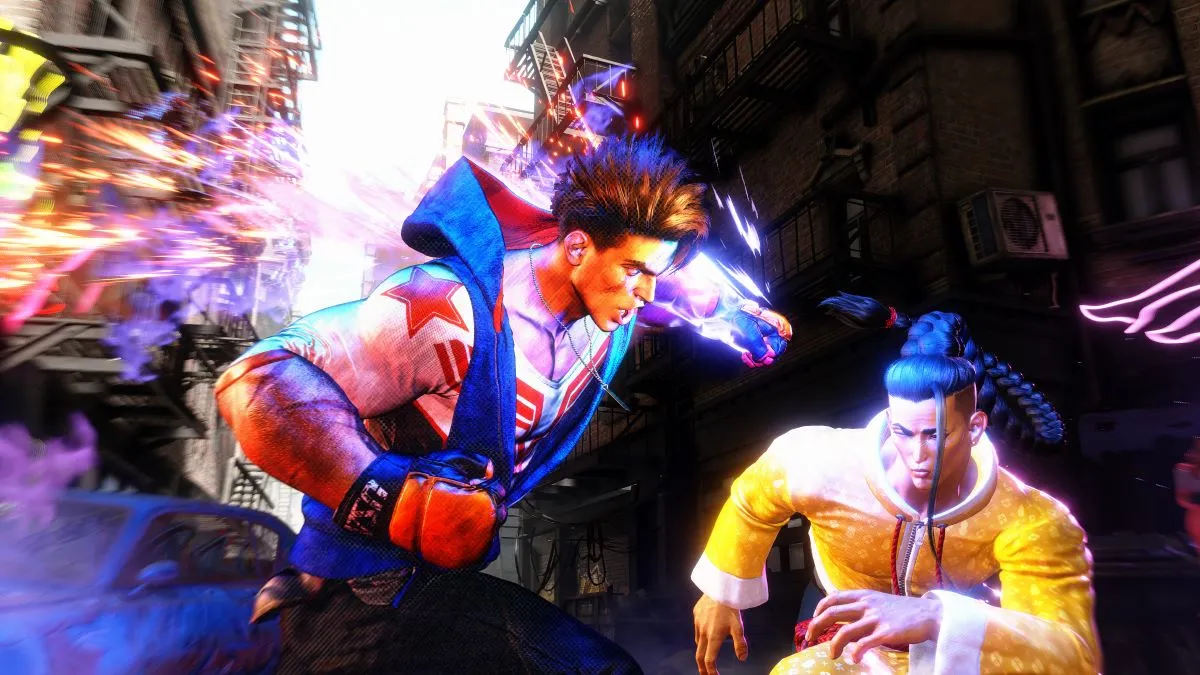
Let’s start with World Tour. This pseudo-RPG lets you make your own New Challenger and drop into the world of Street Fighter. The character creator is ludicrously detailed. You can make everything from a Horrifying Monstrosity to a Regular Dude and interact with and learn the moves of SF luminaries.
You can also fight just about anyone walking around in World Tour, which is fun in a goofy way. As you fight randos on the street and level up, you’ll also earn Zenny to buy stat-boosting gear and learn new special moves from the characters you study under. All the while, World Tour helps you learn how to play, from how to do combos and special cancels to how to play neutral, how to anti-air, and so on.
In theory, it sounds great. But World Tour just isn’t very fun to play. The story is cliché, predictable, and frankly boring, and your created character doesn’t speak, instead ridiculously pantomiming in every cutscene. Mostly, you just run around doing errands for the roster characters, which conveniently take you to other countries so you can meet other roster characters. Luke wants some souvenirs from Brazil? Guess you’re going to Brazil. Watch out for Blanka!
The carrot at the end of this metaphorical stick is the ability to learn every fighter’s move. It’s very cool to be able to put Cammy’s Spiral Arrow, Zangief’s SPD, and Ken’s Shoryuken on the same character. Some of the combinations you can make are utterly game-breaking.
The problem is that leveling up a character’s style takes forever (you do it by using their moves), even if you just focus on one or two characters. Capcom has also locked each character’s second outfit behind maximizing their bond or forking over cash. The amount of time it takes to max a character’s bond feels designed to get you to open your wallet. These costumes are already in the game, mind you.
World Tour mode also plays very poorly on a fightstick because there’s no second analog stick to rotate the camera. You can get around this by holding one button and using one of four other buttons to rotate the camera, but it’s a huge pain. This mode was designed to be played with a controller, and having to have two controllers plugged in to play it — a gamepad to navigate the world and my fightstick for actual combat — is incredibly irritating. Worse still, World Tour forces you to use Modern Controls for its first chapter, whether you want to or not.
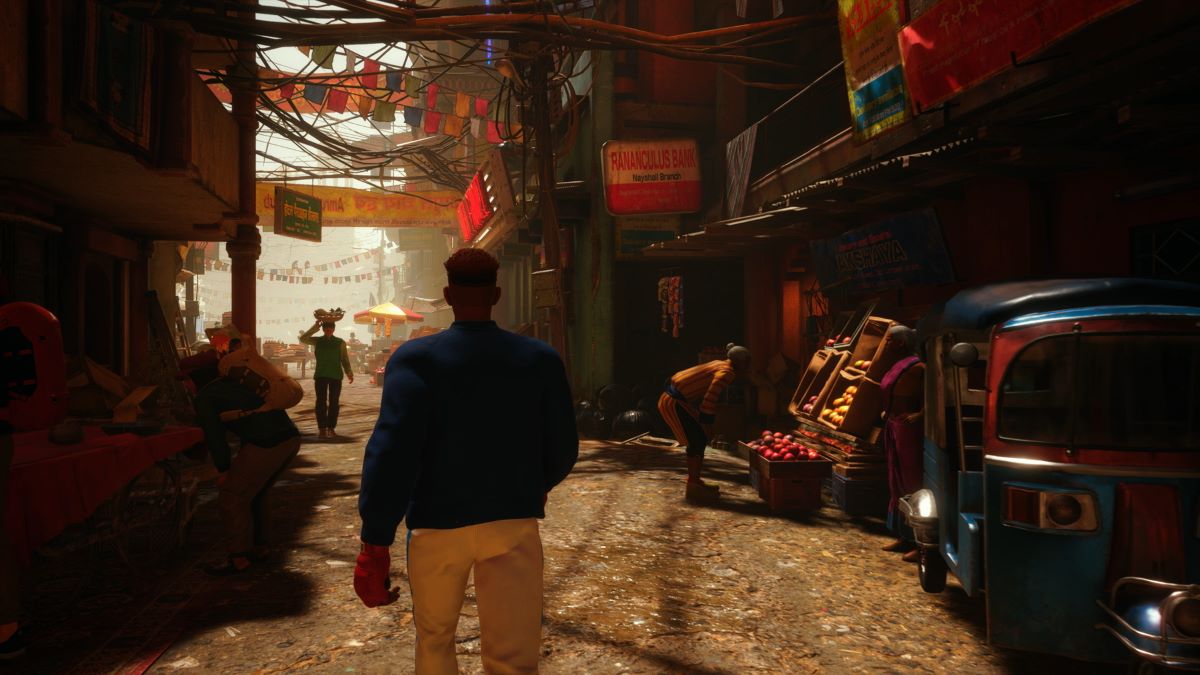
Street Fighter 6 has three control types:
- Classic is the standard six-button set-up, which has your quarter-circles, DP motions, charge inputs, and so on.
- Modern does a few things. It maps light, medium, and heavy attacks to one button each, with the game choosing which move you want based on the situation. Specials are mapped to another set of inputs. And assisted combos let you hold a button while mashing an attack button to perform combos automatically.
- Dynamic is for all the button mashers who just want to press buttons and have the game essentially play itself.
Modern is a nice change of pace for those who find traditional Street Fighter controls overwhelming, but you lose more precise control over your character (you only get one version of each special move, for instance, instead of the typical four).
For the record, I’m not against alternate control types, but Street Fighter 6 should not force a control scheme on anyone when other options exist. Modern is the standard at character select — even online — though you can change it in the settings below your character before confirming your selection. This isn’t a big deal, but almost everyone I played Street Fighter 6 with entered a match with controls they didn’t want because how you switch is not initially clear.
This lack of clarity extends to the game menus as well. It’s not immediately obvious how to join Custom Rooms. You have to be either in Fighting Grounds or the Battle Hub, which opens up the Custom Room option in the main menu. There’s no way that I can tell to just accept an invite and go play with your friends. The game doesn’t teach you any of this. I learned all of it from trial and error.
Thankfully, Street Fighter 6 is a great game once you get to sit down and play it.
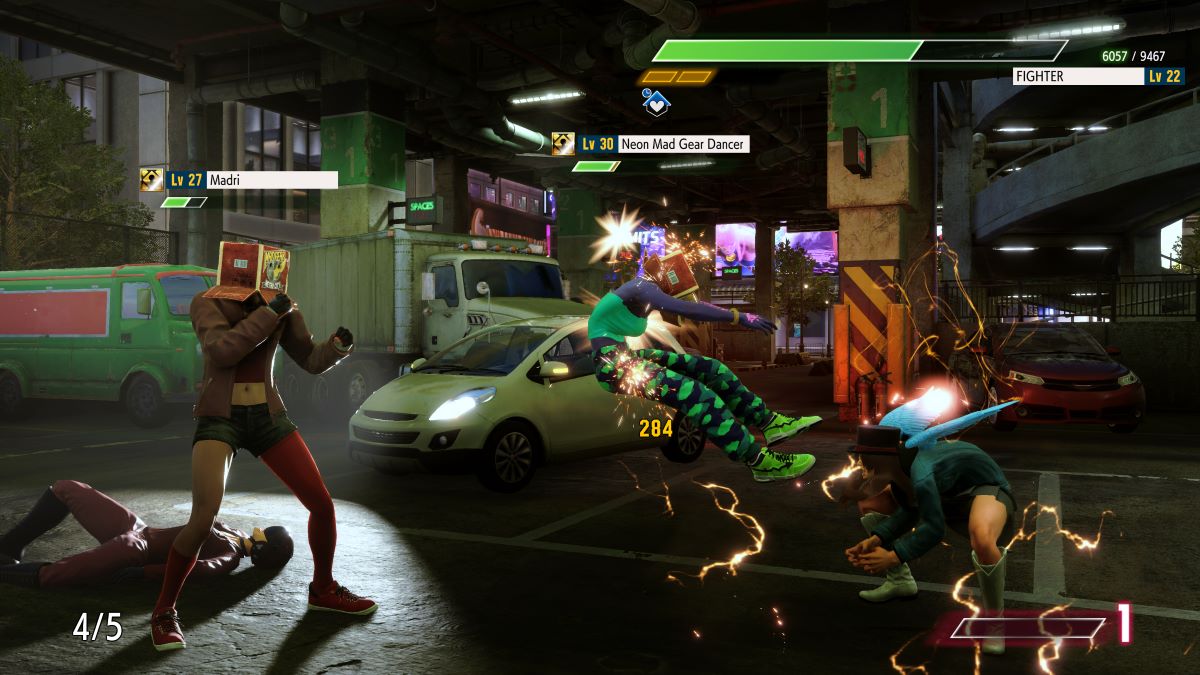
Each Street Fighter is defined by its unique systems, and the Drive System in SF6 is one of the best ever to grace the series. Characters start each match with a full Drive Gauge, so every option is available at round start. EX Specials moves (now called Overdrives) cost two of six total bars. Drive Rush allows you to close distance quickly and costs one bar (or three if you cancel into it from a normal). Drive Reversals cost two bars and get players off you while you’re in blockstun. And then there’s Drive Impact.
Drive Impact is the system’s defining characteristic. It only costs one bar of meter to use, rockets you toward your opponent, and gives you super armor that can absorb the first two hits you take after activating it. Even blocking Drive Impact is risky because it still blows you backward and takes half a bar of your Drive Gauge.
On hit, it sends your opponent into a crumple state that leads to some devastating combos. If you block it near the corner, you get blown back into the wall, crumpled, and opened up for a full combo. Learning how to deal with Drive Impact is crucial to playing Street Fighter 6. Drive Impact is reactable, provided you’re looking for it, but you have to be prepared. As the old joke goes, there’s a big difference between knowing something is reactable and you, personally, being able to react to it.
I think the Drive System is excellent, but Drive Impact will lead to a lot of really angry players saying incredibly nasty things online. Getting hit by Drive Impact never feels good, and it especially doesn’t feel good when you block it in the corner and get KO’ed because you blocked.
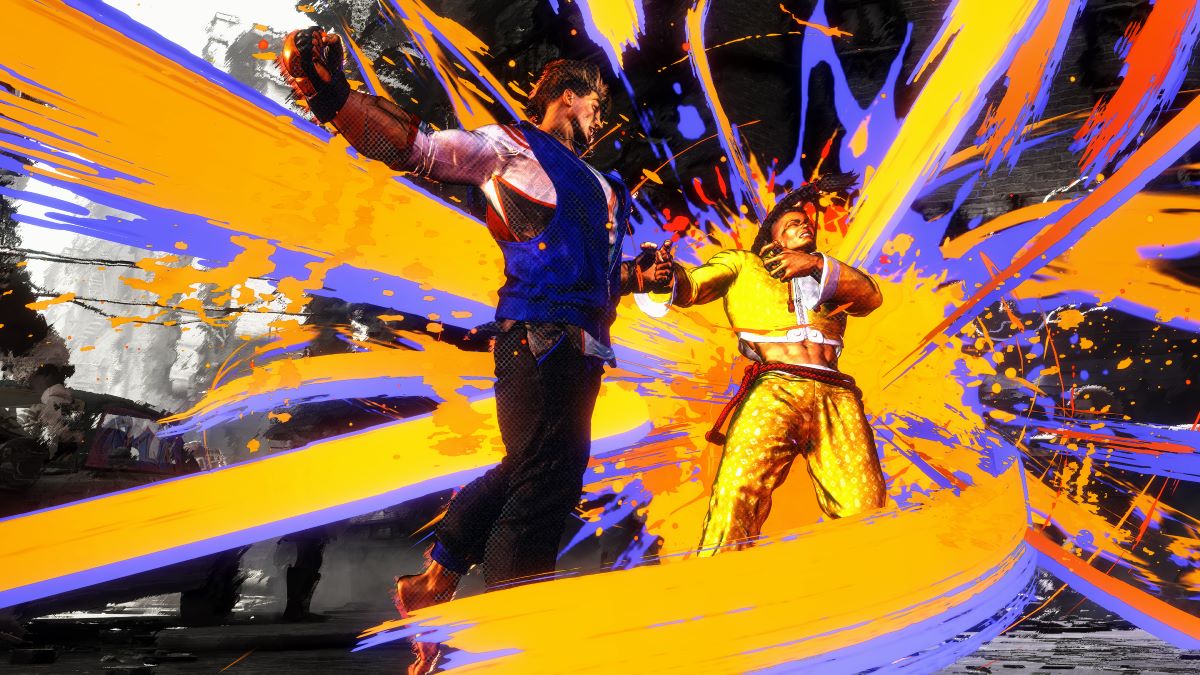
Street Fight 6 launched with 18 characters. You know most of them — Ryu, Ken, Chun-Li, Cammy, and so on — but the six new faces here feel right at home.
Kimberly mixes traditional ninja moves like teleports and air throws with spray paint cans that can serve as both projectiles and mix-up tools. Jamie practices a style of drunken fighting and can buff himself by drinking from flasks, opening up new combo routes and improving his special moves. Marisa is an absolute powerhouse who has a ton of armored moves, advancing special moves, and many ways to make herself plus on block. Manon’s fighting style emphasizes graceful movement and powerful command throws. The list goes on.
Every character feels good, and no matter what your style, there’s an option. Want a grappler? Choose Zangief, Lily, or Manon. Feelin’ the need to rush someone down? Ken, Jamie, and Cammy are good choices. Looking for a high-damage bruiser? Try Luke or Marisa. Want a zoner? Try JP, Guile, or Dhalsim. It’s everything you need from a starting roster, and I can’t wait to see who Capcom adds over the game’s lifespan.
There are also plenty of game modes to check out. Most players will spend a lot of time in Fighting Ground. Here, you can check out the traditional arcade mode, play against Street Fighter 6’s outrageously good CPU, check out team battles, and even partake in extreme battles with wacky rules. The real core of Fighting Grounds, though, is Street Fighter’s teaching tools and training mode, and while they’re not quite up to the level of something like Killer Instinct or Guilty Gear Strive, SF6 does a lot of stuff right.
Character Guides walk you through each character’s moveset, including what moves to use in neutral, how to deal with jump-ins, and what your pressure options are. There are also combo trials that guide you through many of your character’s best combo routes. These routes aren’t always optimal or practical, but they’re generally good enough and do a good job teaching you what links into what and what your options are.
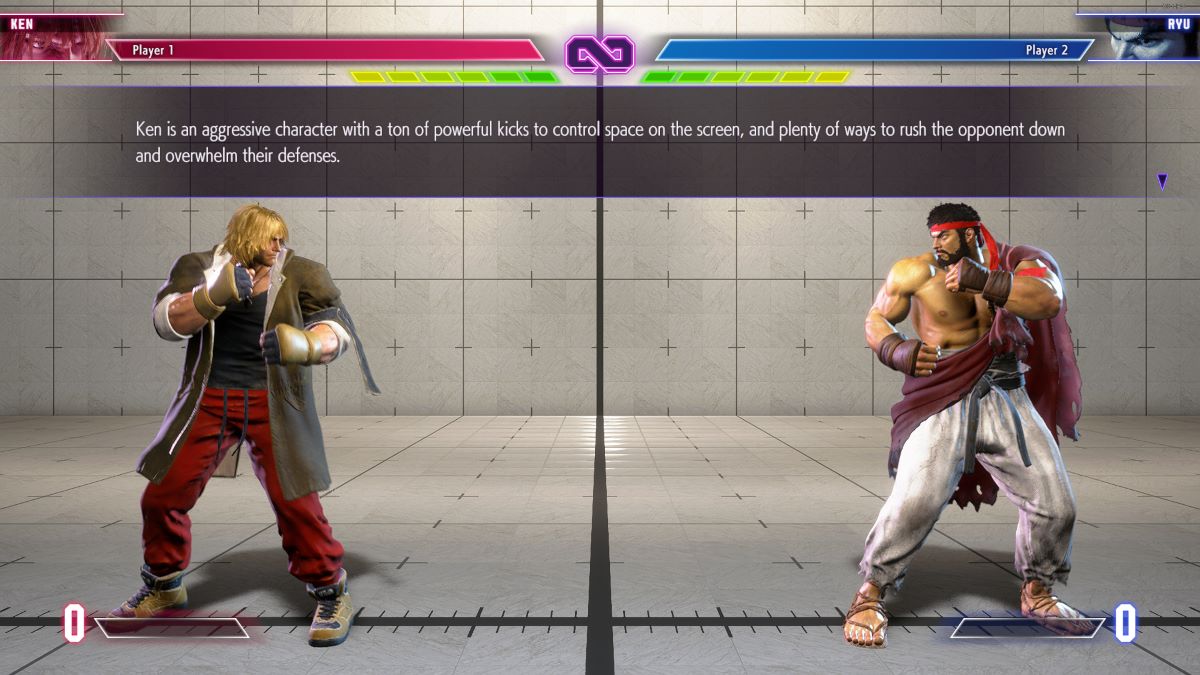
The Training Mode itself is a godsend, with settings that teach you to react to Drive Impact, jump-ins, and just about everything else, in addition to the standard options you’ll see from a traditional fighting game training mode. Street Fighter 6 also lets you see characters frame data in training mode, something that I am over the moon for and should be the standard in every fighting game. That said, it could be better. The training tools don’t cover certain aspects of the game (like okizeme) much, or at all. I guess we have to learn that for ourselves.
Beyond that, you’ll probably spend most of your time in the Battle Hub, a 3D lobby online matches take place. You can queue for ranked or casual matches by jumping into a menu or just sitting down at an arcade cabinet like it’s 1999. I’m pretty iffy on online lobbies, and whether or not they vibe with me depends on the game. Street Fighter 6’s is largely a success. It’s fun to wander around and see the avatars other people have made and watch other people fight.
There’s a nice little era where you can play Capom games from yesteryear like Final Fight and the released-so-many-times-it’s-everywhere Street Fighter 2. You can also fight other players in Extreme Battles or meet up to test your avatars against someone else’s in Avatar Battles. You can even purchase new clothes for your avatar while you’re here.
There are some problems, though. Like World Tour, the Battle Hub is extremely hard to navigate with anything that isn’t a standard gamepad. It’s also not great if you ready up at a cabinet to play with a friend, and then someone you don’t know sits down, forcing you into a match you don’t want to play. The Battle Hub can also be a bit laggy, especially if the servers are under a heavy load.
But the Battle Hub is completely optional. You can queue for Casual or Ranked Matches from Fighting Grounds, and you can make Custom Rooms from there, too. You don’t have to deal with it if you don’t want to, and that’s a good thing.
And then there’s the monetization. Street Fighter 6 will have a Battle Pass, which isn’t great considering this is a $70 game. But the real kicker is how stingy Capcom has been with just about everything in Street Fighter 6. By default, you get one costume and two colors for each character. That’s it. For everything else, you’ll either have to grind in-game or spend real money. And there’s a truly disgusting amount of microtransactions in Street Fighter 6 at launch. By my count, there are nearly 160 things you can spend money on if you want to.
You could theoretically grind (some of) them out in World Tour or by getting Drive Tickets by completing challenges. However, the latter is untenable at launch. Currently, there are only three total challenges — two weekly, one monthly — and while each can reward DTs, they only offer a paltry 500 per challenge. The issue is that a single character color costs 1,000 tickets, and buying all of them for one character will cost you about 6,300 DTs. So there’s that plus the wait, pay IRL money, or grind World Tour. Not ideal.
Street Fighter 6 Review — The Bottom Line
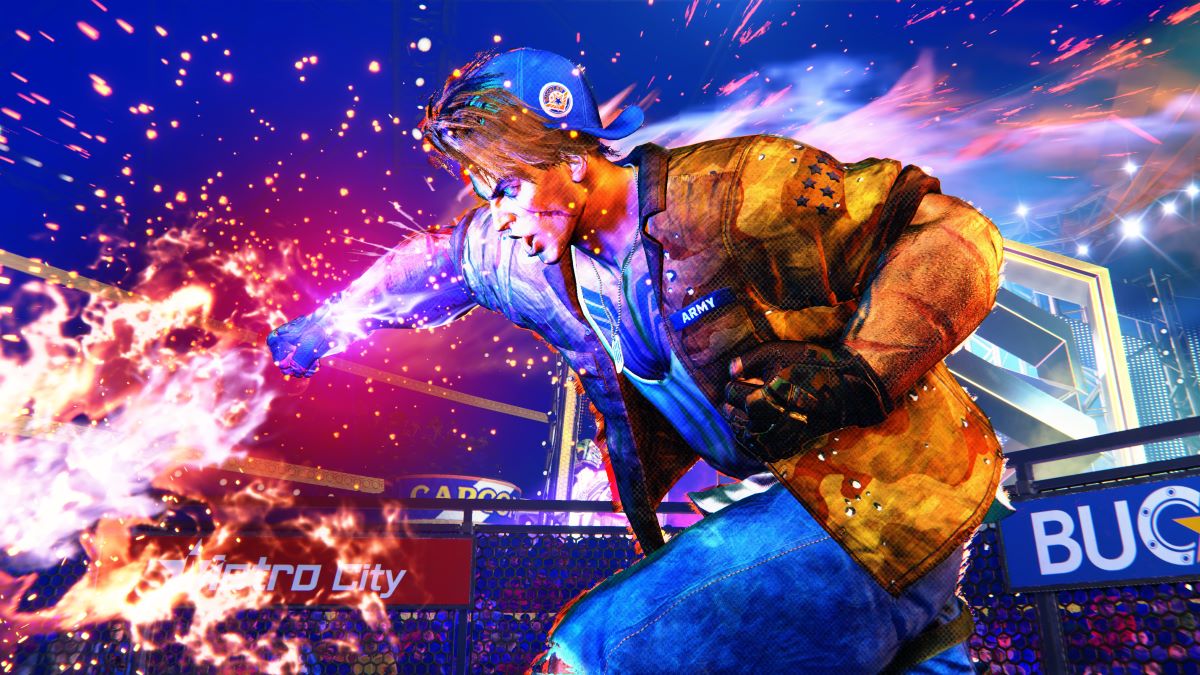
Pros
- Looks and sounds fantastic.
- Teaching tools ease you into the basics and each character’s style.
- A fantastic fighting system.
- You can play online without joining the Battle Hub.
- Modern and Dynamic Controls allow newbies to jump in.
Cons
- World Tour just isn’t very good.
- World Tour and the Battle Hub are hard to navigate on anything that isn’t a gamepad.
- Menus are initially confusing to navigate.
- There are a lot of microtransactions for a $70 game.
All of this stuff makes Street Fighter 6 hard to recommend without reservations. It’s a lot of fun to play, the netcode is wonderful, it has above-average teaching tools, the roster is fantastic, and it looks and sounds excellent. But World Tour isn’t very good, the menus are unintuitive, the training mode, while good, lacks important information, and Capcom is nickel and diming you for basic things like character colors.
For every great thing Street Fighter 6 does — and there’s a lot of them — there’s some flaw, some annoyance, or a ridiculous microtransaction system. If you’re looking for a 2D fighting game to play online or with your friends, Street Fighter 6 is one of the best around. But almost everything around the fighting itself is flawed in a way it probably shouldn’t be. The fight is all, but we shouldn’t have to deal with all of this other stuff to enjoy it.
[Note: Capcom provided the PC copy of Street Fighter 6 used for this review.]










Published: Jun 3, 2023 07:22 pm